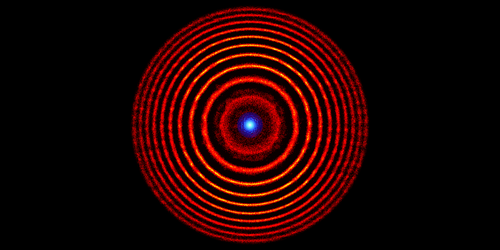A Plasma Lens for the World’s Most Powerful Lasers
Researchers are developing laser beams with petawatt-scale powers ( 1015 W) for use in particle accelerators and fusion research. But these lasers are difficult to focus using conventional solid-state optics, which can be damaged by the high-power light. One possible alternative is making the focusing components from plasma, and researchers have already demonstrated plasma mirrors, gratings, and amplifiers. Now, Matthew Edwards of Lawrence Livermore National Laboratory, California, and colleagues propose a way to make a plasma lens [1]. They say that their concept could be used to create a wide array of lens shapes and other types of plasma-based optics.
The team’s concept creates a lens by inducing patterns of high and low density in a plasma. Light subsequently transmitted through the plasma experiences a phase shift, with the magnitude of that shift depending on the density of the plasma that the light travels through. These shifts can be engineered so that the light interferes constructively at a certain point, effectively focusing the light.
The team proposes two ways to use laser interference to create the varying plasma density. In the first method, the interference pattern of two lasers shapes a neutral gas, with regions of high laser intensity ionizing into a plasma and regions of low laser intensity remaining gaseous. The result is a plasma “bull’s-eye” of alternating high- and low-density plasma rings. In the second method, the interfering lasers shape an already-made plasma. Plasma is pushed away from regions of high laser intensity toward regions of low laser intensity to create the same bull’s-eye density pattern.
Numerical simulations of the lenses show that they are robust to focusing laser beams with intensities of up to 1015 W/ cm2 in lenses made with the first method and 1018 W/ cm2 in those made with the second method.
–Sophia Chen
Sophia Chen is a freelance science writer based in Columbus, Ohio.
References
- M. R. Edwards et al., “Holographic plasma lenses,” Phys. Rev. Lett. 128, 065003 (2022).




